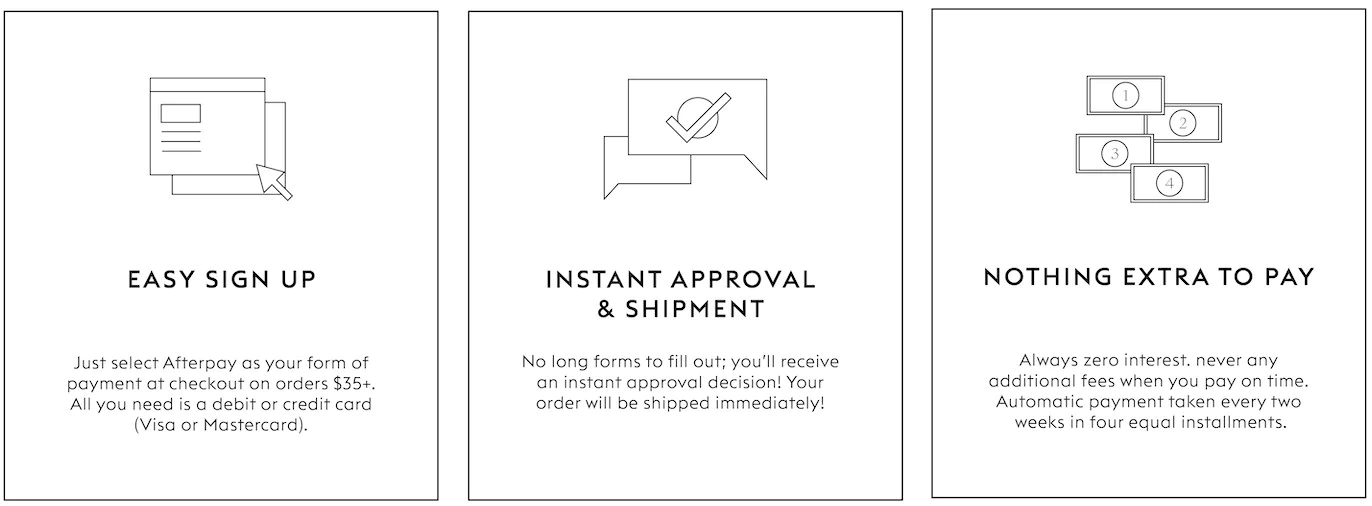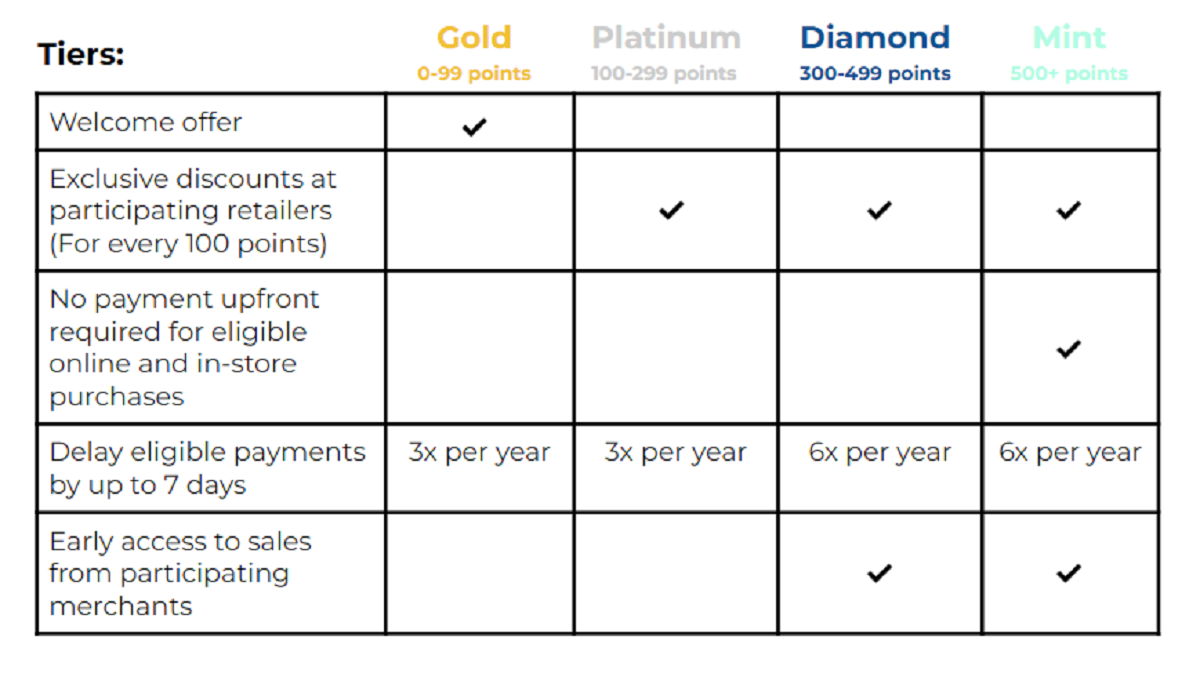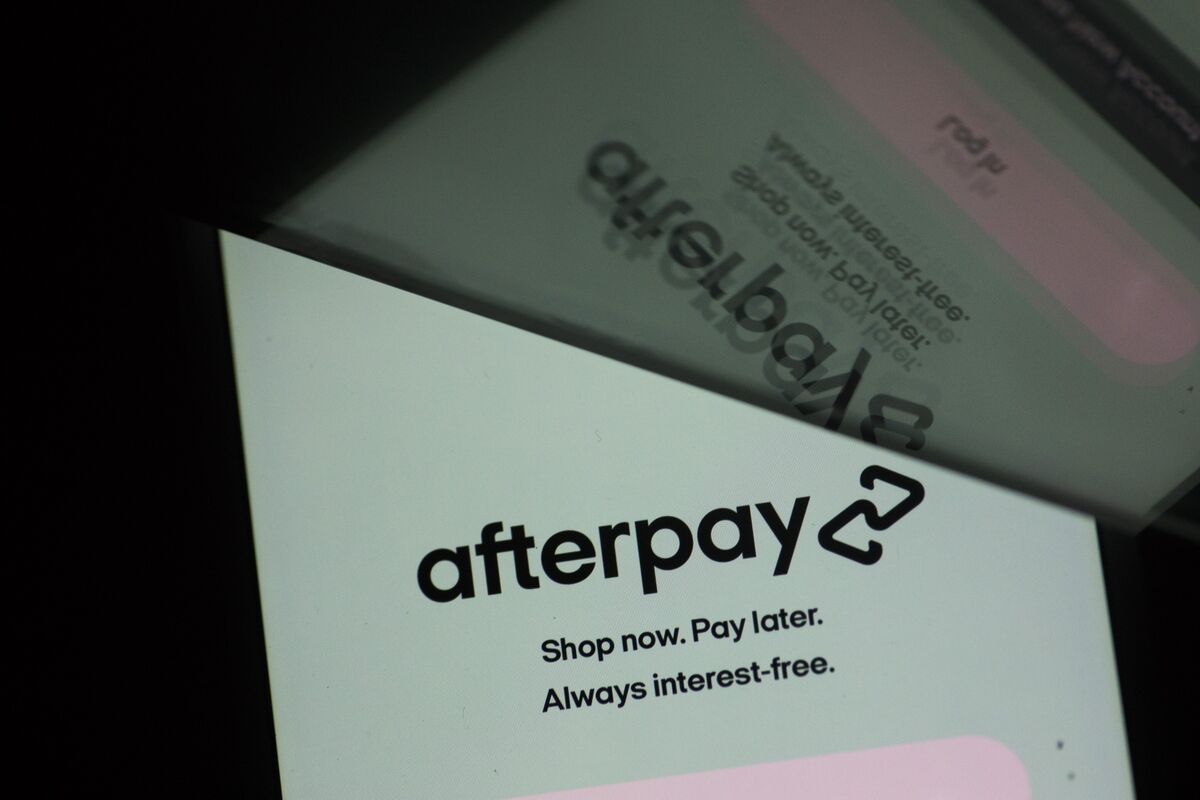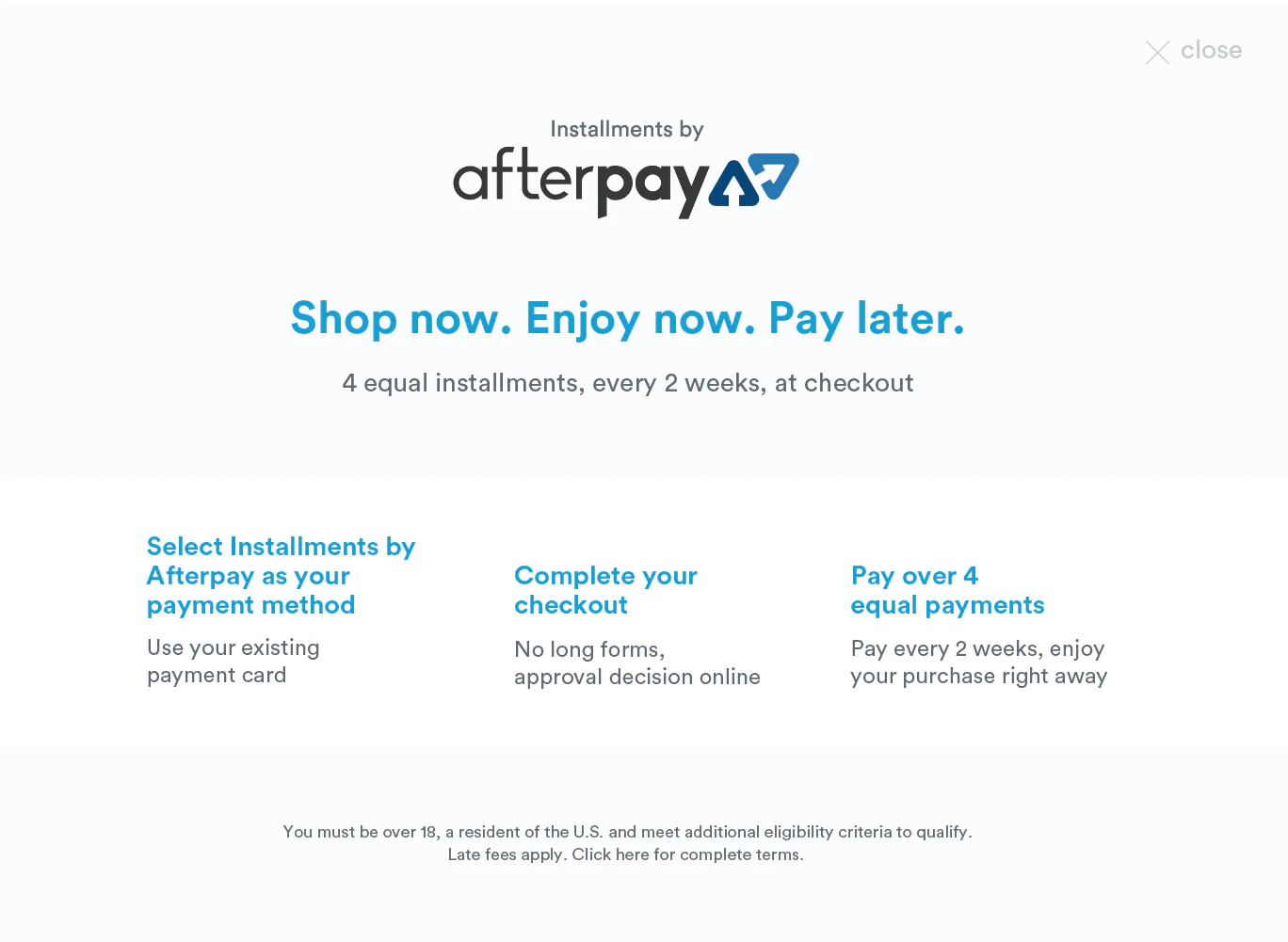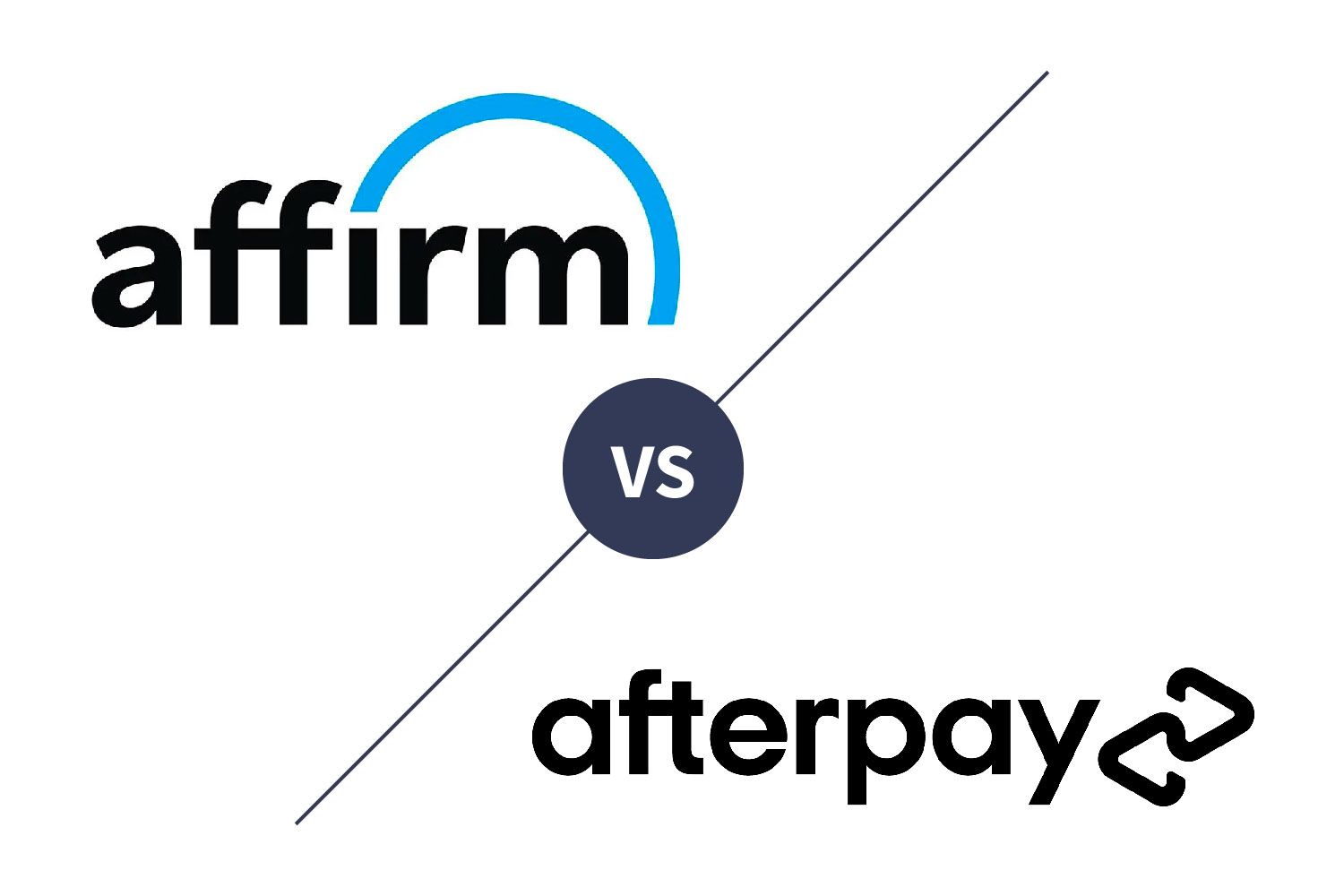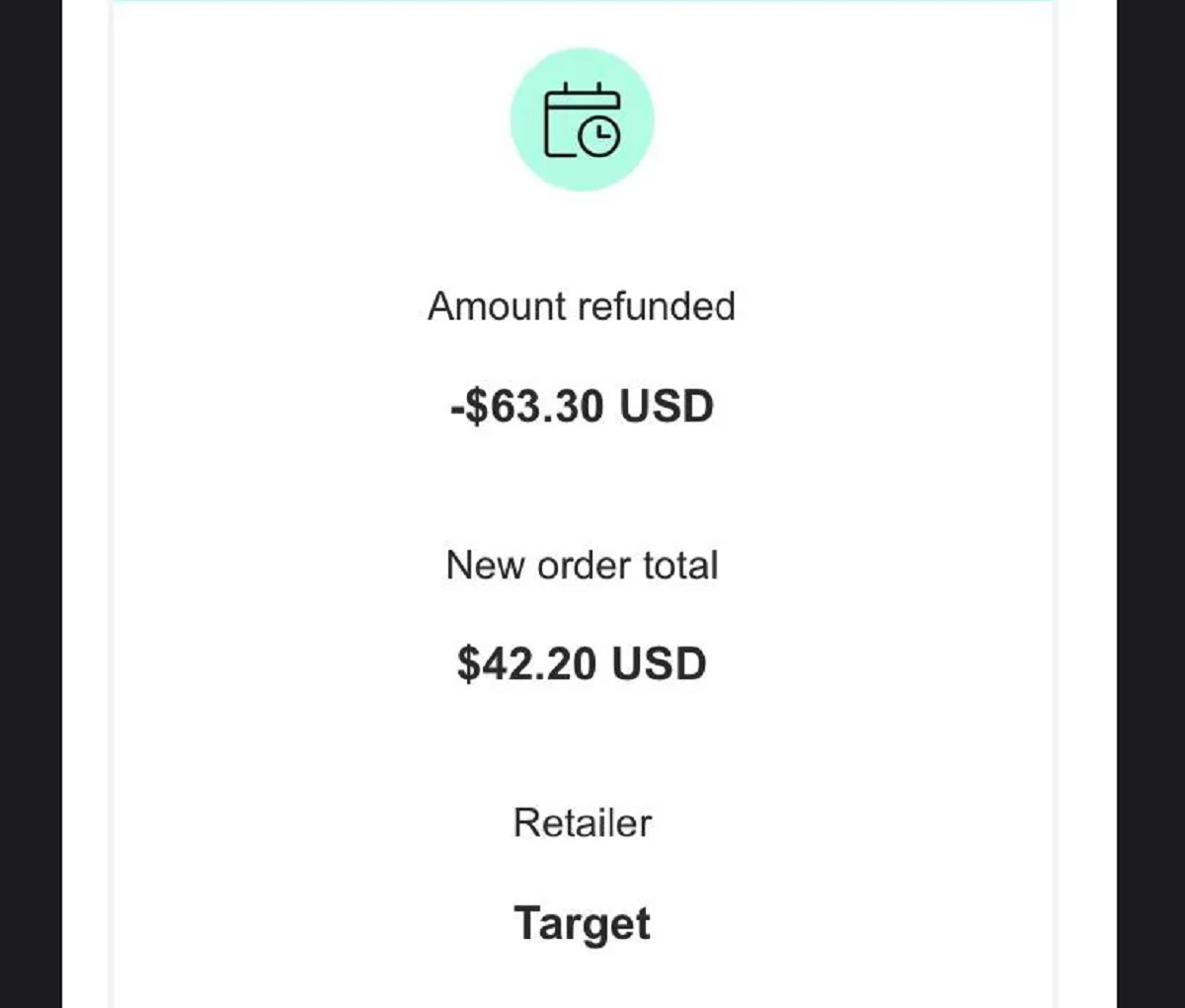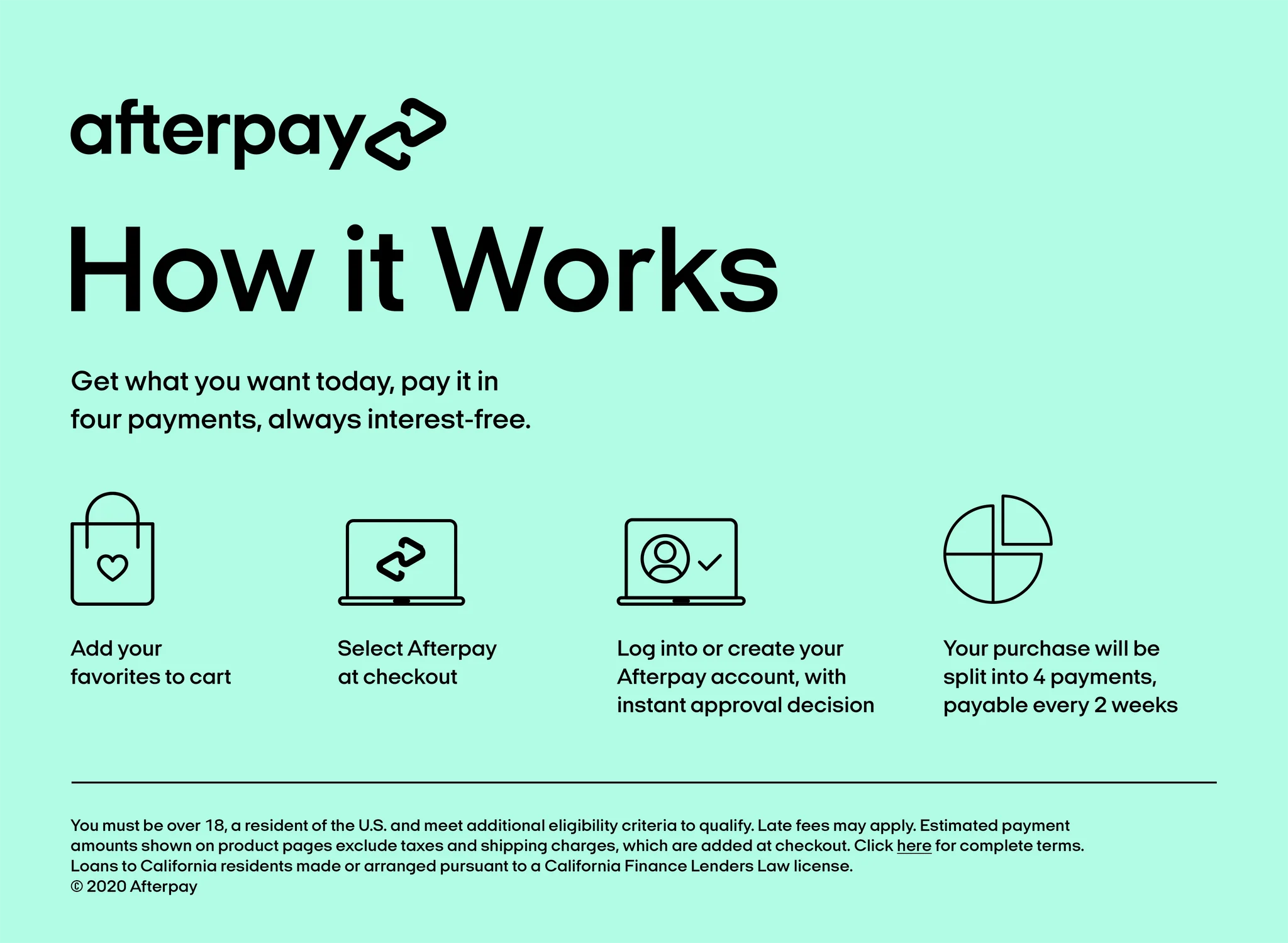What is Afterpay?
Afterpay is a popular payment solution that allows customers to make purchases now and pay for them in four equal installments, with no interest or additional fees. It is essentially a “buy now, pay later” service that has gained widespread popularity in recent years.
The concept behind Afterpay is simple. Instead of paying the full amount at the time of purchase, customers can split their payment into four equal installments. The first installment is paid at the time of purchase, while the remaining three installments are automatically deducted from the customer’s debit or credit card every two weeks.
Afterpay aims to provide a convenient and flexible payment option for customers, allowing them to spread out the cost of their purchases without incurring interest charges. It is particularly popular among younger shoppers who are looking for more control over their spending and prefer to manage their finances in a way that aligns with their cash flow.
One of the key features of Afterpay is that it is available both online and in-store. Many popular retailers have partnered with Afterpay, allowing customers to shop for a wide range of products and services, including clothing, accessories, electronics, beauty products, and more. Afterpay provides customers with a seamless and streamlined checkout experience, making it easy to complete their purchase and manage their payments.
Overall, Afterpay offers a convenient and flexible payment solution for customers, allowing them to make purchases without the need for upfront payment. Its popularity continues to grow due to its ease of use, affordability, and accessibility across a wide range of retailers and industries.
How Does Afterpay Work?
Afterpay operates on a straightforward and user-friendly process that makes it simple for customers to make purchases and manage their payments. Here’s how Afterpay works:
- Select Afterpay at the Checkout: When shopping online or in-store, customers can choose Afterpay as their preferred payment method during the checkout process. Afterpay is typically listed alongside other payment options, such as credit cards or PayPal.
- Create an Afterpay Account: If customers are new to Afterpay, they will need to create an account to proceed with their purchase. This involves providing personal information, such as their name, email address, and phone number. They may also need to link a debit or credit card to their Afterpay account for payment purposes.
- Make the First Payment: After selecting Afterpay and creating an account, customers will pay the first installment of their total purchase price at the time of checkout. This payment is usually around one-quarter of the total amount.
- Receive the Goods: Once the first payment is successful, customers will receive the purchased goods or services, just as they would with any other payment method.
- Pay in Installments: Afterpay splits the remaining balance into three equal installments. These installments are automatically deducted from the customer’s linked debit or credit card every two weeks. Customers can view the upcoming payment schedule and remaining balance by logging into their Afterpay account or using the Afterpay mobile app.
- No Interest or Additional Fees: Unlike traditional credit options, Afterpay does not charge interest on purchases. As long as customers make their payments on time, there are no additional fees or charges.
- Manage Payments: Afterpay provides customers with the flexibility to manage their payments and make changes if needed. Customers can choose to make additional repayments or pay off their balance early without any penalties. If customers miss a payment, late fees may apply, so it’s important to stay on top of the payment schedule.
Overall, Afterpay offers a simple and convenient way to split payments into manageable installments, providing customers with more control and flexibility over their budget. By following the payment schedule and making timely repayments, customers can enjoy the benefits of Afterpay without incurring any interest or additional fees.
Benefits of Using Afterpay
Using Afterpay as a payment method offers several advantages for customers, making it a popular choice for many. Here are some of the benefits of using Afterpay:
- Convenience: Afterpay provides a convenient way to make purchases without needing to pay the full amount upfront. Customers can enjoy their desired products or services immediately while splitting the payment into four manageable installments.
- No Interest: One of the major perks of Afterpay is that there is no interest charged on purchases. As long as customers make their payments on time, they can enjoy the convenience of spreading out payments without incurring any additional costs.
- Simple Approval Process: Afterpay has a straightforward approval process, making it accessible to a wide range of customers. Unlike traditional credit options, there is no lengthy application or credit check. Instead, customers only need to provide basic personal information and have a valid debit or credit card to use Afterpay.
- Budget-Friendly: Afterpay allows customers to budget and manage their finances more effectively. By splitting the payment into four installments, customers can spread out the cost of their purchase over time, making it easier to fit into their monthly budget.
- Increased Purchasing Power: With Afterpay, customers can purchase items that may have been out of reach due to the upfront cost. By dividing the payment into smaller installments, customers have the opportunity to buy higher-priced items without straining their finances.
- Flexibility: Afterpay provides flexibility for customers by allowing them to make additional payments or pay off their balance early without incurring penalties. This feature enables customers to have even more control over their payments and pay off their purchases at their preferred pace.
- Streamlined Payment Process: Afterpay offers a seamless and user-friendly payment process. Customers can easily select Afterpay as their payment method during checkout and complete their purchase in just a few clicks. Afterpay also provides a user-friendly portal where customers can view their payment schedule and manage their account.
Overall, the benefits of using Afterpay include the convenience of splitting payments, no interest charges, budget-friendly options, increased purchasing power, flexibility in repayment, and a streamlined payment process. These advantages have made Afterpay a popular choice among consumers looking for a more manageable and flexible payment solution.
Steps to Qualify for Afterpay
To qualify for Afterpay and start enjoying its benefits, customers need to meet certain requirements and follow a simple process. Here are the steps to qualify for Afterpay:
- Age Requirement: Customers must be at least 18 years old to be eligible for Afterpay. This age requirement ensures that customers have legal capacity to enter into a contract.
- Valid Identification: Customers will need to provide valid identification to verify their identity and age. This can be done by providing details from a government-issued identification document, such as a driver’s license or passport.
- Residency: Afterpay is available in certain countries, so customers need to reside in a country where Afterpay services are offered. Currently, Afterpay operates in several countries, including the United States, Australia, Canada, and the United Kingdom, among others.
- Employment: While Afterpay does not typically perform a credit check, some customers may be asked to provide employment information. This is to ensure that the customer has a stable source of income to support their repayments.
- Debit or Credit Card: Customers will need a valid debit or credit card to use Afterpay. This card will be linked to the Afterpay account for payment purposes. It is important to note that Afterpay does not accept prepaid cards or cash as payment methods.
- Create an Account: Customers will need to create an Afterpay account either online through the Afterpay website or by downloading the Afterpay mobile app. The account creation process typically involves providing personal details such as name, email address, phone number, and creating a secure password.
- Start Shopping: Once the Afterpay account is set up, customers can start shopping with Afterpay at participating retailers online or in-store. During the checkout process, customers can select Afterpay as their preferred payment method and proceed with their purchase.
By following these steps and meeting the requirements, customers can easily qualify for Afterpay and start enjoying the convenience of splitting payments into manageable installments without incurring any interest charges or additional fees.
Age Requirement
One of the key requirements to qualify for Afterpay is meeting the age requirement. Customers must be at least 18 years old to be eligible for Afterpay. This age restriction is in place to ensure that individuals have the legal capacity to enter into a contract.
By setting the age requirement at 18 years old, Afterpay aims to protect both customers and merchants. It ensures that customers have the necessary maturity and legal standing to make informed financial decisions. It also helps safeguard merchants by ensuring that they are entering into contracts with individuals who are of legal age.
The age requirement is a common practice among financial services and payment solutions providers. It is in accordance with the legal age of majority set by each country’s legislation. In some jurisdictions, the legal age of majority may be different, but Afterpay typically follows the minimum age requirement of 18 in most countries where it operates.
To verify the age of customers, Afterpay may require customers to provide identification during the account setup process. This identification can be in the form of a government-issued ID, such as a driver’s license or passport, which contains the customer’s date of birth. This step helps ensure that customers meet the minimum age requirement and are eligible to use Afterpay.
By enforcing an age requirement, Afterpay promotes responsible financial behavior and encourages individuals to make informed decisions about their purchases. It aims to empower young adults with a flexible payment solution while also fostering financial literacy and accountability.
It is important for customers to understand and comply with the age requirement set by Afterpay. Attempting to falsify age or provide false identification is not only against Afterpay’s terms and conditions but also illegal. Afterpay takes appropriate measures to verify customer information, ensuring the integrity of the service and the protection of both customers and merchants.
Overall, the age requirement of being at least 18 years old is an important criterion to qualify for Afterpay. It ensures that customers have the legal capacity to engage in financial transactions and helps promote responsible spending habits in a secure and regulated manner.
Valid Identification
When applying for Afterpay, customers are required to provide valid identification as part of the account setup process. Valid identification serves as proof of identity and helps Afterpay verify the customer’s age and other personal details. It is an important step to ensure the integrity and security of the Afterpay service.
The specific forms of identification accepted by Afterpay may vary depending on the country and local regulations. Generally, Afterpay accepts government-issued identification documents, such as a driver’s license, passport, or national identification card.
Valid identification helps Afterpay verify the customer’s age, which is crucial for complying with legal requirements. It ensures that customers meet the minimum age of eligibility, typically set at 18 years old, before they can use the Afterpay service. By confirming the customer’s age, Afterpay aims to protect both the customer and the merchant by ensuring that they are entering into a legal and binding contract.
Aside from age verification, valid identification also assists in preventing fraudulent activities and identity theft. By requesting valid identification, Afterpay can verify that the customer’s personal information matches the details provided during the account setup process. This helps maintain the security and trustworthiness of the Afterpay platform, protecting both parties involved in the transaction.
When providing identification to Afterpay, customers should ensure that the documents are current, valid, and in good condition. Any alterations or expired documents may result in the account setup process being delayed or rejected.
Afterpay takes the protection of customer information seriously and adheres to strict privacy and security protocols. The provided identification documents are handled with care and in accordance with applicable data protection laws and regulations. After the verification process is complete, customer identification records are securely stored and protected to maintain confidentiality.
It is important for customers to comply with the requirement of providing valid identification when applying for Afterpay. Attempting to submit false or fraudulent identification is strictly prohibited and may result in legal consequences. Customers should also ensure that they keep their identification documents safe and secure to prevent identity theft or unauthorized use.
In summary, valid identification is a necessary requirement when signing up for Afterpay. It helps Afterpay verify the customer’s age, ensure compliance with legal obligations, prevent fraud, and maintain the security and trustworthiness of the Afterpay service.
Residency
Residency is an important criterion to qualify for Afterpay. Customers must reside in a country where Afterpay services are offered in order to be eligible for the payment solution.
Afterpay operates in various countries around the world, including the United States, Australia, Canada, the United Kingdom, and several others. The availability of Afterpay in each country may vary, so it is essential for customers to ensure that they meet the residency requirement of their respective country.
The residency requirement is in place to comply with local laws and regulations. Afterpay must operate within the legal frameworks of the countries it serves and adhere to any jurisdiction-specific requirements regarding financial services and payment solutions.
When creating an Afterpay account, customers may be asked to provide their current address. This address is used to verify the customer’s residency and determine whether Afterpay services are available in their country. Customers are responsible for providing accurate and up-to-date information to ensure a smooth account setup process.
Afterpay offers the convenience of online shopping across a wide range of retailers, and its availability in multiple countries allows customers to access the service regardless of their location. By expanding its services to different countries, Afterpay aims to provide a seamless and accessible payment solution to a global customer base.
It is important for customers to understand and comply with the residency requirement of Afterpay. Attempting to use Afterpay in a country where it is not available may result in the inability to complete purchases or potential account limitations. Customers should familiarize themselves with the list of countries where Afterpay operates and confirm their eligibility before attempting to use the service.
Afterpay takes measures to ensure that customers are indeed residents of the eligible countries. This may involve verifying IP addresses, requesting additional proof of residence, or using other methods to validate customer information. These measures are in place to protect the customers, merchants, and the Afterpay platform from fraud or misuse.
Overall, the residency requirement is an important factor in qualifying for Afterpay. Customers must reside in a country where Afterpay services are available in order to enjoy the convenience and flexibility of the payment solution.
Employment
While Afterpay does not typically perform a credit check, some customers may be asked to provide employment information as part of the account setup process. This requirement ensures that customers have a stable source of income to support their repayments and helps mitigate the risk of defaulting on payments.
When applying for Afterpay, customers may be asked to provide details about their employment, including their current job status and the name of their employer. This information is used to verify the customer’s income source and assess their ability to fulfill the repayment obligations.
The employment requirement serves as a reasonable assessment of a customer’s financial stability. By having a steady source of income, customers have a higher likelihood of being able to meet their payment obligations on time, reducing the risk of late or missed payments.
It’s important to note that not all customers will be required to provide employment information. Afterpay’s decision to request employment details may vary based on factors such as the customer’s credit history, purchase amount, or existing Afterpay account activity. Customers should follow the account setup process and provide the requested information as instructed.
Afterpay respects and implements measures to protect customer information in accordance with applicable privacy laws and regulations. The employment information provided by customers is handled with confidentiality and used solely for the purpose of assessing their creditworthiness and ability to repay.
Afterpay understands that employment situations can change, and customers are encouraged to update their employment information if there are any changes in their job status. Customers should keep their Afterpay account details accurate and up to date to ensure the continued use of the service without disruptions.
With employment information, Afterpay aims to ensure responsible lending practices and help customers maintain a healthy financial situation. It allows Afterpay to provide a flexible payment solution to a wide range of individuals while managing the potential risk associated with credit and repayment obligations.
In summary, the employment requirement is in place to assess a customer’s ability to make repayments on time and maintain a stable financial situation. By providing employment information, customers help Afterpay ensure responsible lending practices and create a secure environment for both customers and merchants.
Debit or Credit Card
Having a valid debit or credit card is an essential requirement to qualify for Afterpay. Customers need to link their card to their Afterpay account for payment purposes, as Afterpay operates as a payment platform that facilitates transactions using existing payment methods.
Afterpay accepts both debit cards and credit cards from various issuers. Customers can use their linked card to make payments for purchases made through the Afterpay service. It’s important to note that Afterpay does not accept prepaid cards or cash as payment methods.
Linking a debit or credit card to an Afterpay account ensures a smooth and seamless payment process. When a purchase is made using Afterpay, the total amount is automatically split into four equal installments, with the first installment paid at the time of purchase. The remaining three installments are deducted from the linked debit or credit card every two weeks.
Customers should ensure that the debit or credit card they link to their Afterpay account is active, valid, and has sufficient funds or available credit to cover the installment payments. This helps avoid any payment failures or delays that may incur additional charges or penalties.
It is worth noting that Afterpay takes the security of customer card information seriously. Card details are encrypted and securely stored, adhering to industry-standard security protocols. Afterpay does not store the full card information on its servers, helping to maintain the privacy and protection of customer data.
Customers should also keep their linked card information up to date to avoid any disruptions in the payment process. It is essential to notify Afterpay promptly if there are any changes to the linked card or if the card is lost or stolen. This ensures that future payments can be processed smoothly and securely.
By requiring a valid debit or credit card, Afterpay ensures a secure and efficient payment experience for both customers and merchants. It enables customers to enjoy the flexibility of splitting their payments into manageable installments while leveraging their existing payment methods.
Overall, having a valid debit or credit card is a necessary requirement to qualify for Afterpay. It is important for customers to ensure that their linked card is active, valid, and has sufficient funds or available credit to cover the installment payments, providing a seamless payment experience while using Afterpay.
Communicating with Afterpay
Communication plays a crucial role in any business relationship, and the same applies to your interactions with Afterpay. If you have any questions, concerns, or need assistance regarding your Afterpay account or payments, there are several ways to get in touch with Afterpay’s customer support team.
One of the most convenient methods to reach Afterpay is through their website or mobile app. After logging into your Afterpay account, you can access the Help Center or Contact Us section, which provides answers to commonly asked questions and allows you to send inquiries directly to the support team. Afterpay strives to respond to customer inquiries promptly and efficiently.
Additionally, Afterpay provides email support for more specific or detailed inquiries. You can find the appropriate contact email address on the Afterpay website or app. When contacting Afterpay via email, ensure that you provide all relevant details regarding your query to help expedite the resolution process.
Another effective way to communicate with Afterpay is through their social media channels. Afterpay is active on platforms such as Facebook, Twitter, and Instagram, where you can reach out to them publicly or through direct messaging. This can be particularly useful if you prefer a more public response or if your inquiry relates to a broader topic that may benefit other customers as well.
If you prefer traditional methods of communication, Afterpay also provides a customer service phone number. You can find this number on the Afterpay website or app, and it allows you to speak with a customer service representative directly. Phone support can be especially helpful when you have urgent inquiries or need immediate assistance.
When reaching out to Afterpay for support or assistance, it’s essential to provide accurate and complete information about your account, purchase, or issue you are facing. This helps Afterpay’s customer support team understand your situation better and provide an appropriate resolution or guidance.
Afterpay values its customers and aims to provide timely and efficient support. Whether you have questions about payment schedules, account management, refunds, or any other concerns, do not hesitate to reach out to Afterpay’s support channels. The customer support team is dedicated to providing personalized assistance and ensuring a positive user experience.
By effectively communicating with Afterpay, you can address any concerns, get assistance with your account, and resolve any issues that may arise, ultimately enjoying a smooth and seamless payment experience.
Use Afterpay Responsibly
While Afterpay offers a convenient and flexible payment solution, it is important to use the service responsibly to maintain your financial well-being. Here are some tips to help you use Afterpay responsibly:
- Stick to a Budget: Before using Afterpay, create a budget that reflects your income and expenses. Ensure that your Afterpay repayments fit within your budget and avoid overextending yourself financially.
- Only Purchase What You Need: Before making a purchase with Afterpay, consider whether it is a necessary expense. Avoid impulse buying or purchasing items that you do not truly need.
- Pay Attention to Payment Due Dates: Keep track of your payment due dates and ensure that you have sufficient funds in your account to cover the installment payments. Missing payments may result in late fees and affect your creditworthiness.
- Stay Mindful of Your Overall Debt: While Afterpay does not charge interest, it is important to be mindful of your overall debt. Consider your other financial obligations and any existing debts before committing to Afterpay payments.
- Avoid Overusing Afterpay: Using Afterpay for every purchase can lead to accumulating multiple payments at different times. Use Afterpay selectively and for larger purchases where splitting payments can be more beneficial.
- Communicate with Afterpay: If you are having difficulty making payments or foresee any financial challenges, reach out to Afterpay’s customer support. They may be able to provide assistance and guide you through potential solutions.
- Regularly Monitor Your Account: Closely monitor your Afterpay transactions and ensure that they match your purchases. Report any unfamiliar or suspicious activity to Afterpay immediately.
- Avoid Excessive Returns: Excessive returns may affect your Afterpay account. Be mindful of the return policies of the retailers you purchase from and only return items when necessary.
- Keep Your Account Information Secure: Protect your Afterpay account details, including your login credentials and linked card information. Regularly update your passwords and avoid sharing sensitive account information with others.
- Continuously Educate Yourself: Stay informed about Afterpay’s terms and conditions, fees, and any updates to their service. This knowledge will help you make informed financial decisions when using Afterpay.
By following these guidelines, you can use Afterpay responsibly and enjoy the benefits of the service without compromising your financial stability. Responsible use of Afterpay ensures a positive experience and helps you maintain control over your financial commitments.
Conclusion
Afterpay has become a popular payment solution for customers looking for convenience and flexibility in managing their finances. By allowing customers to split payments into four equal installments, with no interest or additional fees, Afterpay provides a convenient “buy now, pay later” option for a wide range of products and services.
In this article, we explored the key aspects of Afterpay, including how it works, the benefits it offers, and the steps to qualify for Afterpay. We discussed the age requirement, the need for valid identification, the residency criteria, employment considerations, and the use of a valid debit or credit card.
We also discussed the importance of responsible use of Afterpay, emphasizing the need to stick to a budget, avoid unnecessary purchases, pay attention to payment due dates, and communicate any difficulties or concerns with Afterpay’s customer support. Additionally, we highlighted the value of staying mindful of overall debt, regularly monitoring your account, and keeping your account information secure.
Afterpay serves as a convenient and flexible payment solution, enabling customers to make purchases without the need for immediate upfront payment. However, it is important to remember that using Afterpay responsibly is crucial to maintaining personal financial well-being.
Ultimately, Afterpay offers an accessible and user-friendly way to manage payments and make purchases. By understanding how Afterpay works and following the necessary steps to qualify, customers can benefit from its convenience while ensuring responsible financial practices. As long as customers use Afterpay responsibly and make timely repayments, they can enjoy the flexibility and convenience that Afterpay offers without incurring interest charges or additional fees.
If you are considering using Afterpay, be sure to review your budget, understand your financial capabilities, and make informed purchasing decisions. By doing so, you can leverage the benefits of Afterpay while maintaining a healthy financial outlook.







